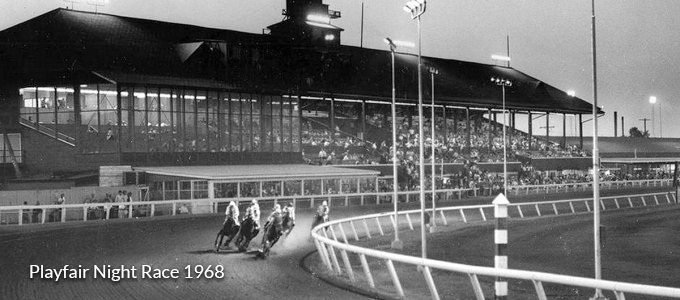A Brief History of Playfair
In the late 19th century, when surveyors first plotted what would eventually become the city of Spokane, they divided the city up into sections by the Land Ordinance of 1785. Playfair Commerce Park sits in what was then called School Section 16. Community leaders set aside Section 16 either to use as a site for schools, or to sell, using the proceeds from the sale to fund schools. The state sold strips of land to the railroads, creating the wedge that would later become Playfair.
The Spokane Interstate Fair
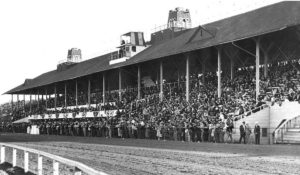
Around the turn of the 20th century, a committee of the Spokane Fruit Fair decided to purchase a new location. From the state, they bought 60 acres in the Y formed by two railroads.
On April 27th, 1901 – the day after the committee and the state agreed to the deal – the Spokane Daily Chronicle proclaimed: “They would have a county fair, with horse racing, stock exhibits, with all the other features of such an exhibition.”
The Fairgrounds hosted hundreds of thousands of visitors, not only to the fair, but to see the very first airplane flight in Spokane. On April 2, 1910, aviator Charles K. Hamilton astonished crowds with two successful flights, rising 250 feet above the racetrack in his Curtiss biplane.
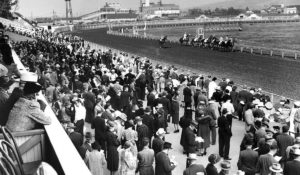
Charles Lindbergh visited Spokane on September 12th, 1927, just months after his historic transatlantic flight. School children were let out of class to join the thousands who packed the grandstands at the fairgrounds to hear him speak.
The Spokane Interstate Fair continued here until 1930, just after the beginning of the Great Depression. The Fair Association sold the property to the city of Spokane, which put it under the responsibility of the parks department.
The land sat empty for five years until the state of Washington legalized gambling at the horse races in 1933.
Playfair Race Course
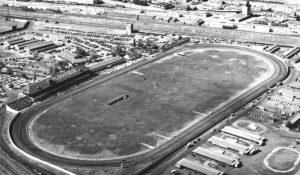
Playfair Race Course opened on August 30th, 1935. Fans lined up at the gate to be the first to purchase tickets. There were 16 days of racing that year. During the 1984 season, there were 104 days.
Over Playfair’s lifetime, an estimated 15 million people came to the track to play the ponies.
Ferris Field
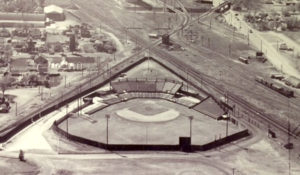
The west half of the property has its own story. The land in the corner of the convergence of the Northern Pacific (now the Burlington Northern and Santa Fe) and the Union Pacific railroad tracks was once Ferris Field, home of the Spokane Indians professional baseball club.
Built with New Deal funding in 1936, the field not only hosted baseball games but boxing matches as well. During football season in 1948 and 1949, local high schools held their games there.
The baseball team later moved into a more modern stadium, and Ferris Field was torn down. Legalized gambling at casinos, declining numbers of breeders and faltering attendance took their toll on the racetrack. Playfair closed its doors for good in 2000.
Once again, the city purchased the land in 2005, this time with plans for a new sewage treatment plant.
Playfair Commerce Park
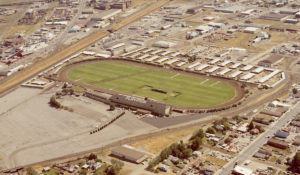
When the City chose a new location for the treatment plant, Playfair sat empty for five years until L.B. Stone Properties Group purchased it in 2010.
Development at Playfair is ongoing. Now an industrial properties campus – the first in the region to be built to aerospace manufacturing standards – the industrial park is home to nine completed buildings, with more in the planning phases. Playfair also houses the headquarters of the Stone Group of Companies, as well as SCAFCO Steel Stud Company and CWallA Building Materials Company.

